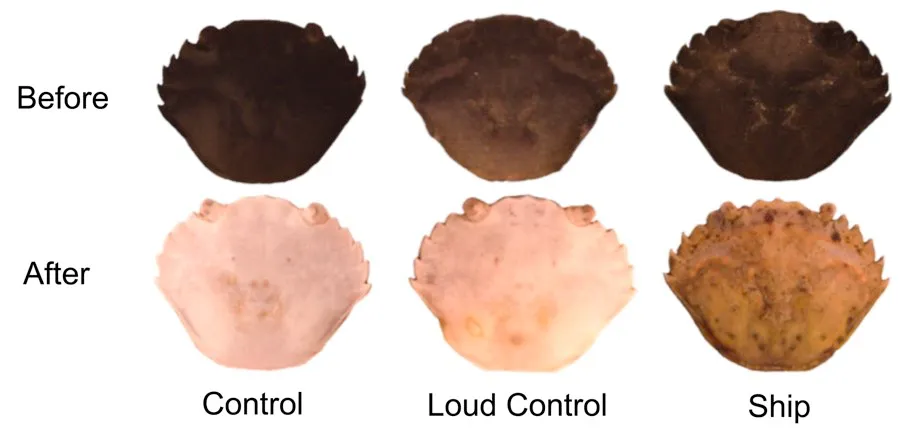- Shore crabs can't camouflage as well in the presence of loud ship noise, a study has found.
- Crabs that heard ship noises changed colour slower than those that heard natural underwater noises.
- The researchers believe that the stress of ship noise takes up too much energy for the crabs to camouflage properly.
Prolonged exposure to noise from ships can weaken the camouflaging powers of crabs and make them vulnerable to predators, scientists have said.
Researchers believe stress caused by the man-made undersea sounds can alter the survival behaviour of the creatures, which include the ability to change colour to match their surroundings or respond to danger quickly.The team also discovered natural ocean sounds played as loudly as ship noise had no effect on crab camouflage or behaviour.

The researchers say their findings, published in the journal Current Biology, indicate underwater sound pollution could be posing a threat to a wider range of marine species, including those who do not rely on sound for foraging.
Tom Tregenza, a professor at the University of Exeter and one of the study authors, said: “We already knew that noise can be disruptive to marine animals, but a breakthrough from this study is to show that the racket ships make is much more disruptive than natural noise, even if the natural noise is equally loud.”
Read more about crustaceans:
- Crabs can remember the route through a complex maze
- Plastic pollution killing more than 500,000 hermit crabs on remote islands
Lead author Emily Carter, from Exeter’s Penryn Campus in Cornwall, added: “Shore crabs don’t depend heavily on sound – so our finding that noise affects their behaviour and ability to camouflage themselves suggests ship noise might affect a very wide range of species.”
The researchers exposed 98 juvenile shore crabs either to quiet underwater sounds, an hourly recording of a ship passing, or an hourly loud occurrence of underwater sounds for eight weeks.
Those who heard only the ship noise were much slower at camouflaging, changing colour only half as much compared to the other crabs in the experiment.These crustaceans also took longer to respond to a predator, simulated by a dummy bird, when ship noise was being played in the background, but reacted normally when they were not exposed to the noise.

Ms Carter said: “The size and strength of adult shore crabs mean they have other defences, but juveniles rely heavily on concealment and are attacked by many predators, from fish to birds – so a reduction in their camouflage ability and anti-predator behaviour could be a big problem.
“Previous studies have suggested that a lot of energy may be used during colour change, and stress is also thought to be costly in terms of energy. So, the most likely explanation for our findings is that the stress caused by ship noise means crab don’t have as much energy to devote to camouflage.”
Reader Q&A: Why do crabs walk sideways?
Asked by: James Louis, Bristol
Crabs have a wide, flattened shape that makes it easy to burrow into sand or squeeze into narrow crevices, but also restricts the range of motion at the ‘shoulder’ joint of each leg.
Crabs can actually shuffle slowly forward, but move much faster by flexing the second joint of each leg. These joints are simple hinges, like our knees, and they only bend sideways.
Read more: